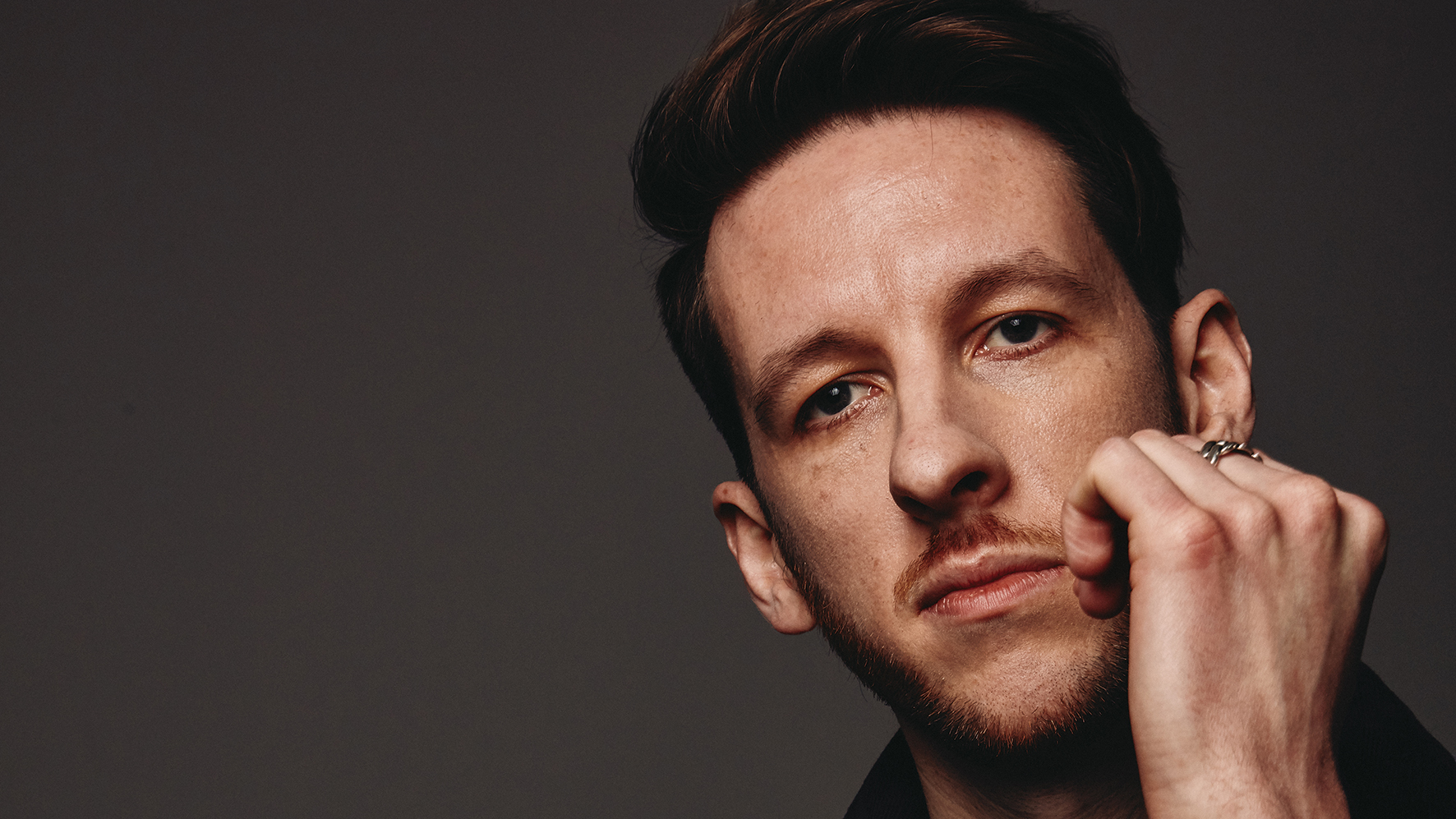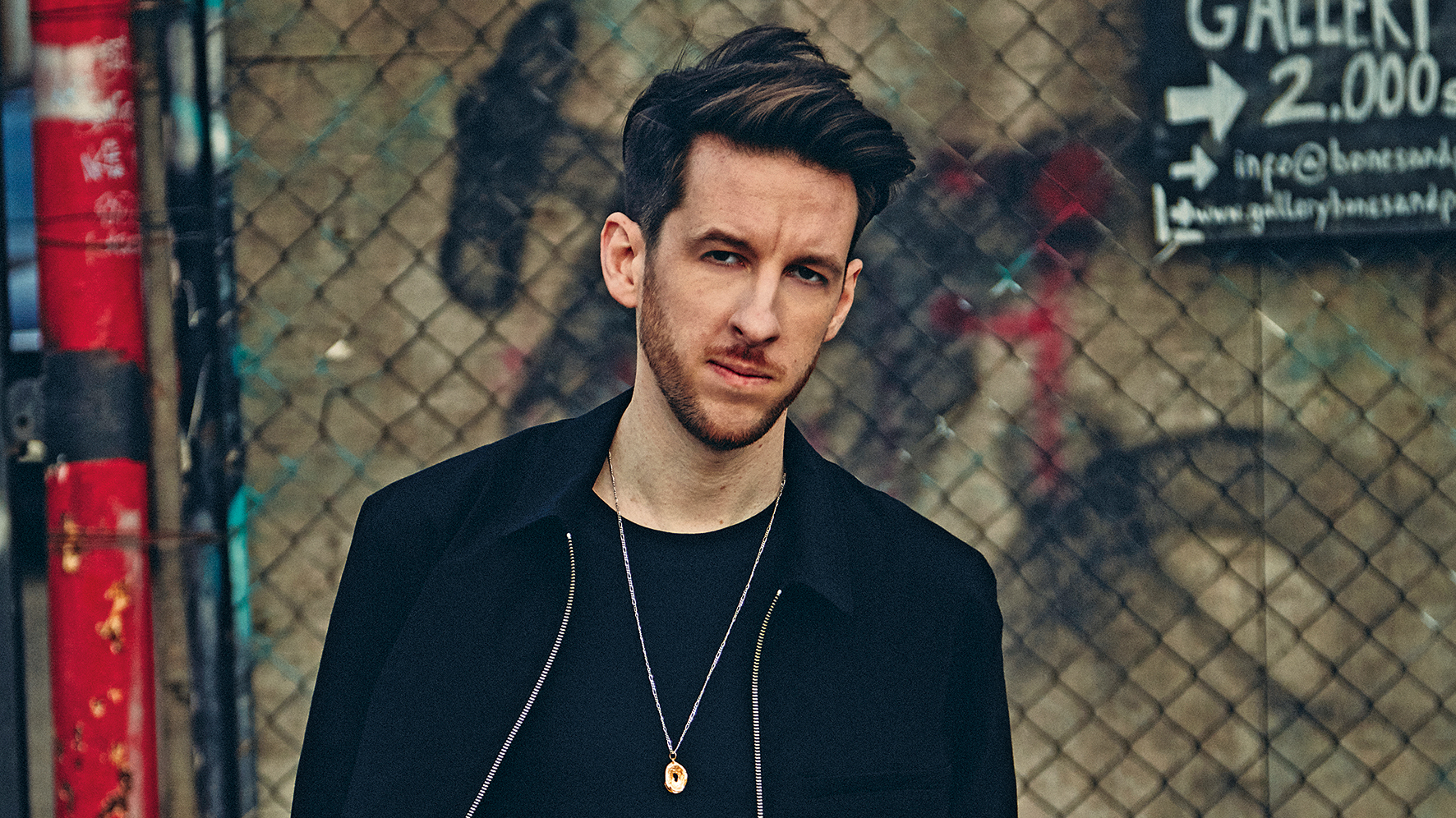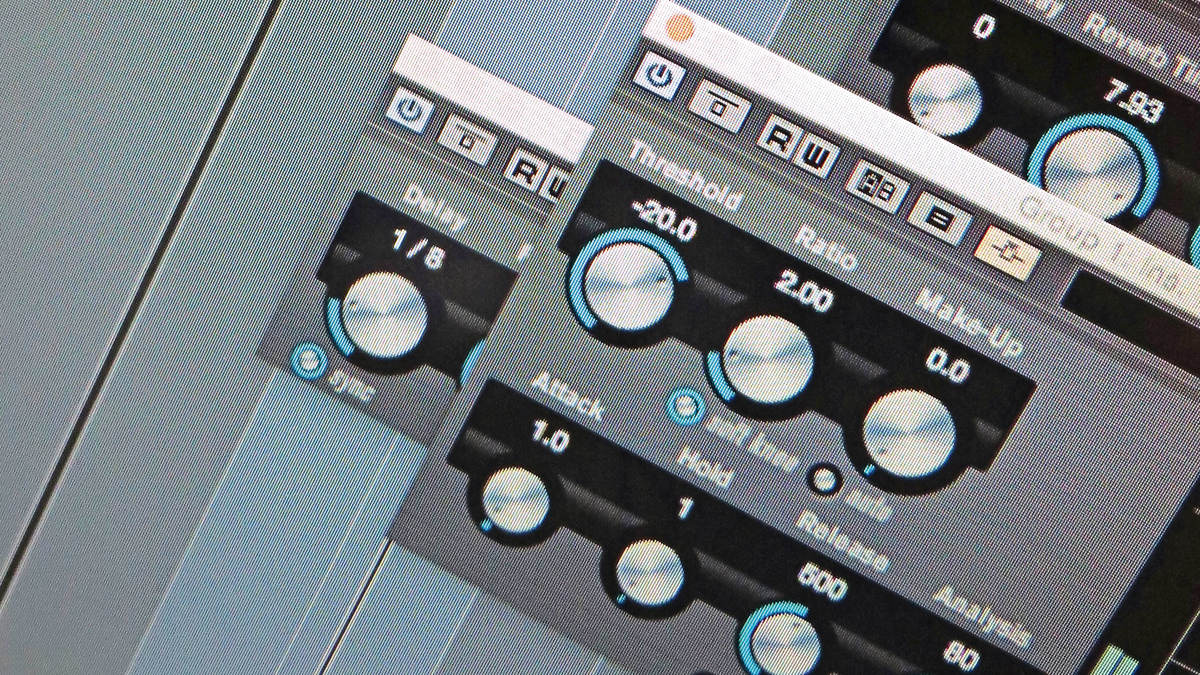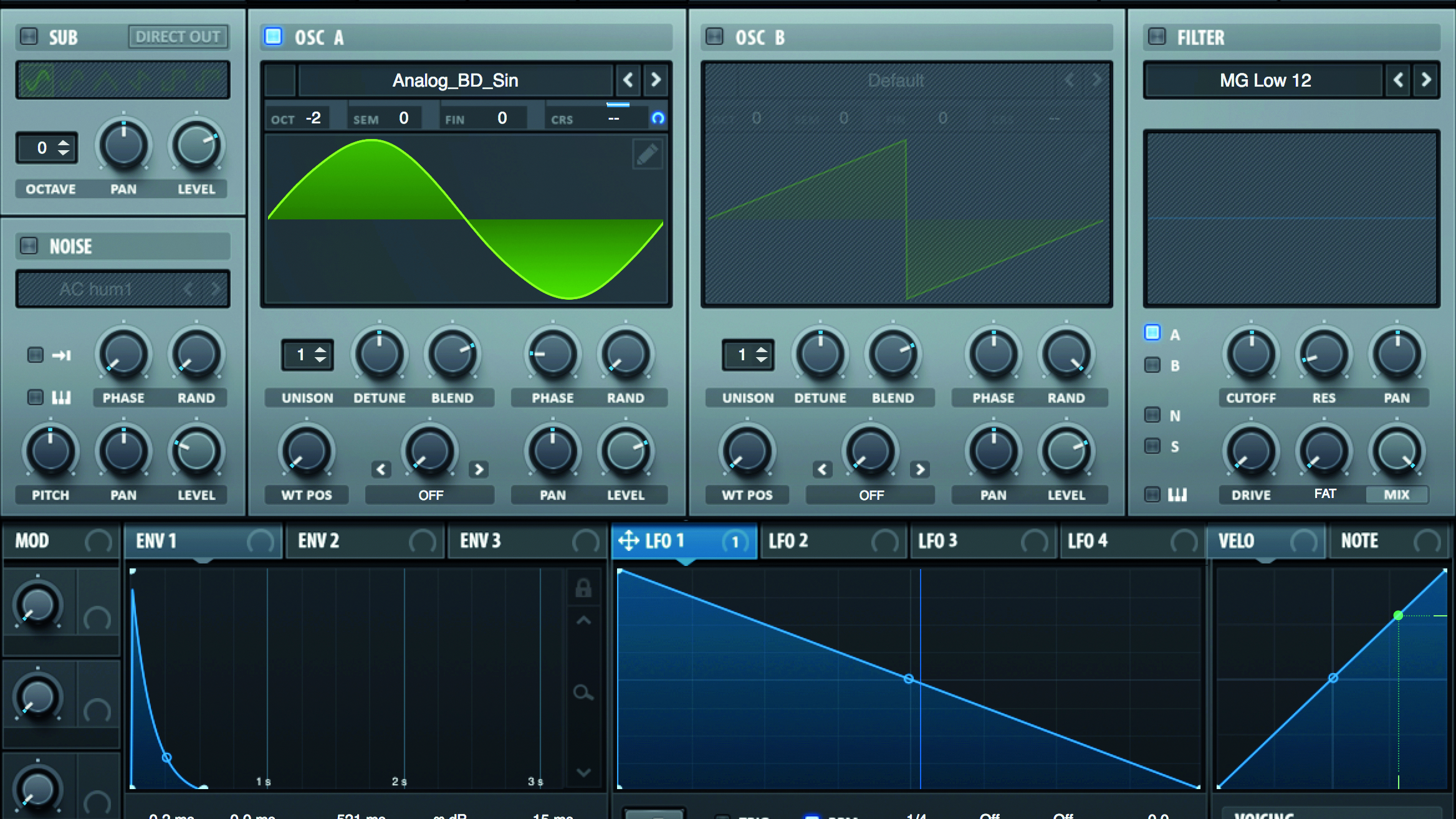Sigala: "Having loads of toys in the studio is more of a distraction than anything else - and I’m very easily distracted"
Chart-topping UK artist and producer Bruce Fielder on the power of presets and his go-to plugins for livening up a mix

If you ever want your music to be a global phenomenon – and, let’s face it, who wouldn’t want a slice of that? – then you could do worse than taking a leaf out of Sigala’s notebook.
Sigala got his first breakthrough when he grabbed a Jackson 5 sample and made a worldwide smash out of it with Easy Love in 2015. Since then it’s been punch after punch in the chart hit stakes, with his debut album Brighter Days spawning no fewer than 10 singles, eight of which hit the UK top 10, not to mention the many collaborations with artists including John Newman, Paloma Faith, KATO, Craig David, Sean Paul, James Arthur, Becky Hill and The Vamps.
Forget all that, though, because we know that you want to know the answer to just one question: “What’s your favourite EQ Bruce?”
What is your production philosophy?
“If it feels good making it, it will feel good hearing it!”
When did you discover the computer music route to music production?
“I downloaded some software called Cool Edit Pro, and learned to make music on that through watching Youtube tutorials. I didn’t know anyone who produced music so I had to learn everything from those videos and a lot of trial and error.”
Tell us about the gear in your studio.
“It is a very simple setup – I do pretty much everything in the box, so all I have is a MIDI keyboard, Adam A77X monitors with a sub and some Yamaha NS10s (speakers). I have a nice mic too. It’s important to me that my vocals are crystal clear so I have a Manley Reference Cardioid mic which I love. I’ve also just invested in a new M1 Macbook Pro to replace my 9-year-old Mac Pro trash can. It’s unbelievable how they can get so much power into a laptop.
“I do love the idea of having loads of live instruments and percussion lying around in the studio but, in reality, I’m just too impatient to record them properly so I end up doing everything in the box and then replacing it later on down the line with a real instrument if it works. This way I don’t waste any extra time on ideas until I know they definitely work. Having loads of toys in the studio is more of a distraction than anything else, and I’m very easily distracted. I work best when I don’t have to look away from my screen for a few hours.”
Want all the hottest music and gear news, reviews, deals, features and more, direct to your inbox? Sign up here.

What are your favourite plugins?
“My favourite plugins change on a monthly basis, I always get inspired by new plugins and use them for a few weeks on every channel then move onto something new. Saying that, there are a few that never fail me…
“Fabfilter Pro-Q 3. Maybe a bit boring starting with an EQ but it’s probably my most used plugin as it can be used for much more than just EQing. I often use it as a multiband compressor, a widener and even a multiband sidechain compressor. It’s great being able to notch out harsh frequencies with the dynamic EQ function so it’s only really cutting out sounds when they are most prominent. I could go on and on, but it’s basically just a monster and although it’s quite expensive for an EQ, it’s honestly the only one you’ll ever need.
“XFer Records Serum is my go-to synth for those hard hitting sounds that you want to cut through. I use it mostly for bass and sub sounds. The only thing with a lot of these great soft synths, however, is that they are only really great if you are either a synth wizard and can create your own amazing sounds from scratch, or you have some decent preset packs. I have delved into the world of synthesiser wizardry but now I’m proudly grounded in the world of taking presets and moulding them into what I need. So this is an awesome and powerful plugin but only with the right tools.
“XLN Audio RC-20 Retro Color is by far my favourite plugin to help bring sounds to life. I use it a lot while in the early stages of creating to help provide some vibe to sounds. It is amazing at making things quickly sound more lo-fi and organic, which is great if you have a lot of things fighting for centre space in the mix. I also have my own preset which I can just slap on most things to help them sound less robotic. It’s subtle but when you use it a lot it really helps your track come to life.

“Little Alter Boy. This is a plugin we have all heard a lot in pop/dance music recently, from Meduza x Goodboys to Tiesto The Business. It’s been used a bunch on vocals to get that cool formanted sound we all love, but you can also get some pretty cool results using it on things like percussion and top loops to give them a crunchiness quite unique to Alter Boy.
“There are a bunch of other plugins that do the same thing; some of them actually do it better. A few I’ve tried and got great results with are: Waves Vocal Bender, Infected Mushroom’s Manipulator and my personal favourite ElastiquePitch 2 which gives a bit more flexibility to achieve the perfect format with minimal artefacts.
“Audiomovers Listento is another one. I couldn’t have lived without this over lockdown. It’s a high quality audio streaming app that runs as a plugin so you can send and receive signals directly into your DAW from anywhere in the world. It’s not zero latency but it’s good enough and stable enough to work long distances with people, which I have continued to do since.”
How do you tend to start a track?
“Most of my tracks follow a fairly standard pop structure, but I always experiment by moving sections around and trying to find the best way to make the track flow. Once I have a great hook and drop, it’s just a case of how to best set up the hook for maximum impact. It requires a lot of trial and error. I often bounce several versions with different structures and come back to them another day with fresh ears.”
How do you know when a track’s done?
“My average time spent working on a track, start to finish, is anywhere between 50-100 hours. I never really think it’s done to be honest. If I had the chance I would keep tweaking forever, but once it reaches a point where the label is on board then I have to work to a deadline. This is a blessing as it gives me a cut off point, so I have to make a decision on which of 100 different versions I’m going to use.
“I’ve found the most effective way to finish quickly is to work in short bursts and not over-listen to your own demos. If I listen to my own bounces too much then it becomes way more difficult to make important decisions, which in turn makes the process much longer and less fun. I allow myself maybe a week of space then listen to the track once or twice, make some notes, then crack on.
“A quick way to work out what’s wrong with a track is to simply play it to people; you’ll often find you hear things very differently. Chances are you’ll know exactly what to fix before you’ve even heard their feedback, and if you find yourself making excuses for specific parts of the track, then it should be pretty obvious what you need to do.”
Do you have any production tricks?
“I think something that defines the way I work and my sound is probably the fact I work in Pro Tools. It’s a bit more geared towards live music and recording stuff, so that’s the way I tend to work. I also play most things on the MIDI keyboard, so there’s no drawing in chords on the MIDI roll. Not that there’s anything wrong with that. I think this kind of gives it a human feel that you don’t get from drawing in MIDI.

“One ‘trick’ I use a lot is layering sounds. It’s very easy to go overboard with this and actually take away from the overall sound, but if you do it right it can be awesome. My latest track Melody has six different bass sounds all providing something different. Some of them provide mid-range, some have a room verb on to give the bass width, or there’s a sub to handle the low end and a super dry one with a clicky transient to help the bass feel percussive. Only the super low-end ones are side-chained; the rest are free to cut through. They’re all sent to a bus with some processing on to help glue them all together.”
Were you involved in any collaborations for this latest project?
“I love working with new artists, singers and musicians so this project was all about that really. I’ve had the chance to work with some amazing, well established people and also some exciting new artists and writers. Every song is a collaborative effort, and that’s how I prefer to work. I find it way more fun to work with other people than on my own. I often work with other producers too as it’s great to bounce ideas off each other and it’s generally more fun.”
Which track do you wish you’d produced and why?
“Don’t You Worry Child – Swedish House Mafia. This song really marked a new generation of dance music for me. One of the guys who wrote the song played me the original demo that they sent to SHM and it was basically a guitar ballad version of the song we all know and love. The song is incredible and I also really respect how they turned a ballad into an absolute dance banger. I think the guitar version is online somewhere now; it’s worth listening to.”
Do you have anything on your studio gear wish list?
“The new MacBook Pro M1 has been on my wish list for a long time. I was so happy to get mine over this last Christmas. It is honestly the biggest game changer in studio gear for me for a long time. I’ve been so reliant on my Mac Pro trash can for many years. With this, it’s nice not to be glued to the studio and be able to open a session on my laptop while I’m sitting in bed.”
What advice do you have for playing out live or DJing?
“My live set varies quite a lot depending on the location or type of show. I have various different versions of my own songs which I can use for different environments. It really pays to do your research and try and work out what the crowd will go mad for. It’s just important to be prepared so make sure you know your tracks, know your edits, rehearse some mashups or transitions so you have some tricks to pull out of the bag if you need.”
Any other advice?
“Do what you enjoy. Don’t follow the crowd because you think you should. Make the music that you want to make, as it will sound way more honest and probably connect with people much more than if you are forcing it.”
“Otherwise, be patient and work hard. Success can happen overnight, but when it does you need to be prepared. A lot of artists struggle when success comes too soon and they don’t have the experience or they haven’t put in the hours to know how to maintain it. So if it hasn’t happened for you yet, think of it as an opportunity to prepare for when it does.”

What would you like to see developed in terms of music production technology or studio gear?
“I wish Avid would fix the sidechain in Pro Tools. It’s honestly the only downside to using the software. When you have plugins before your sidechain that cause delay compensation to kick in, it puts the side-chain out of time and they haven’t been able to fix it. There’s a few workarounds but it really does make life difficult, especially as I use sidechain so much! Anyway, that doesn’t answer your question, but I needed to get that off my chest! If anyone has found a fix I’d love to know about it.”
What do you have planned?
“I’m so excited that my new single Melody is finally out. It’s a track I’ve put so much love and work into and I really feel it represents where I am as an artist right now. My second album is coming out this year, which I’m very excited about. It’s full of exciting collabs and feel good bops. I can’t wait for you all to hear it!”
Sigala’s Melody was released earlier this year. His new album will be released later this summer.


Computer Music magazine is the world’s best selling publication dedicated solely to making great music with your Mac or PC computer. Each issue it brings its lucky readers the best in cutting-edge tutorials, need-to-know, expert software reviews and even all the tools you actually need to make great music today, courtesy of our legendary CM Plugin Suite.

